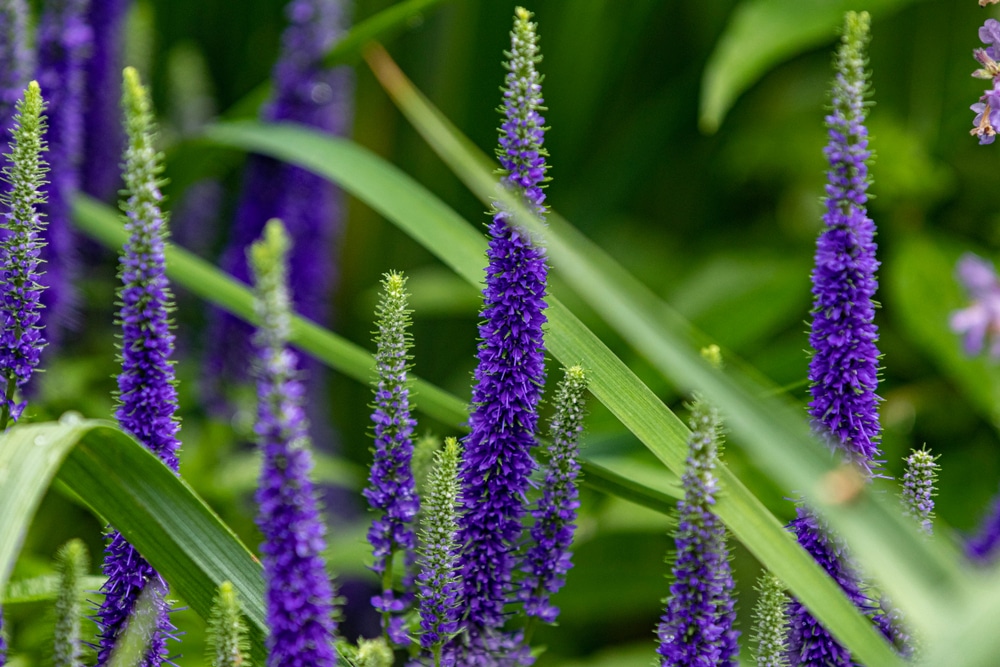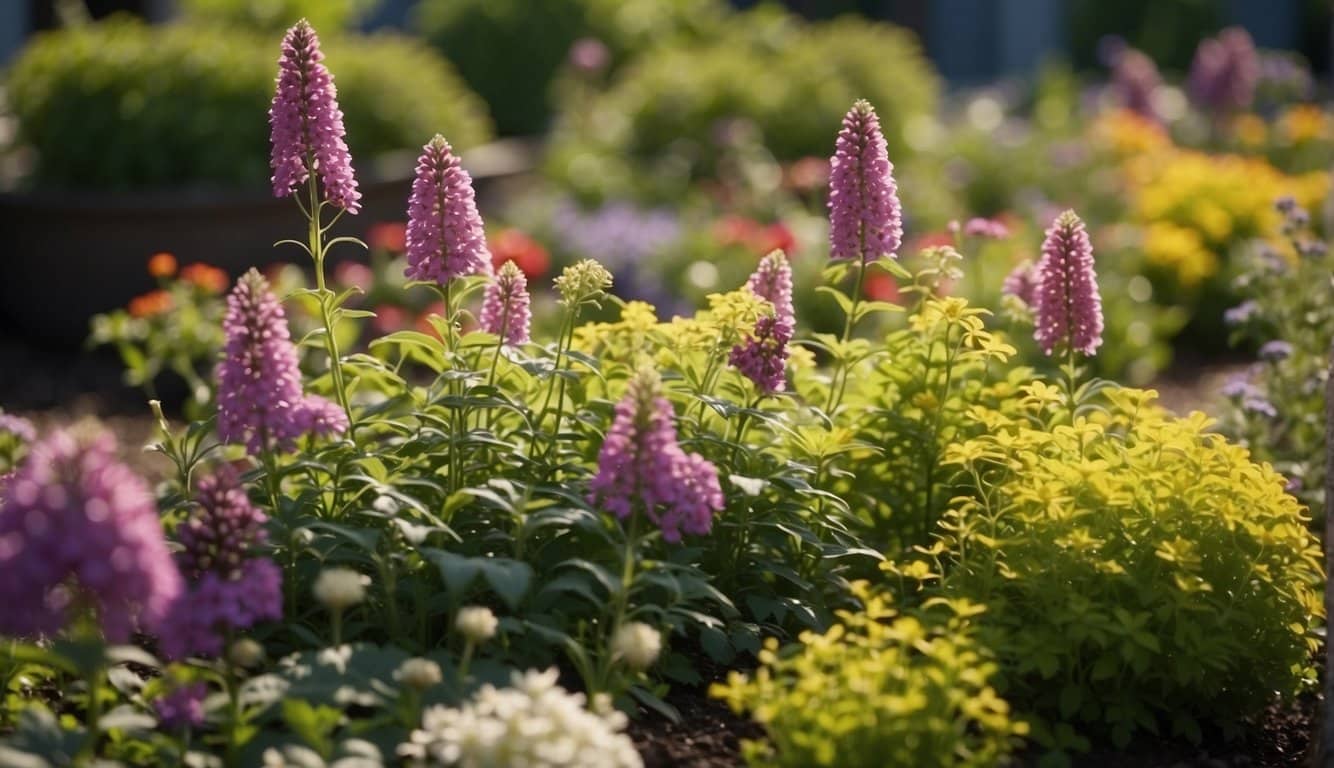Should I Divide Perennials in the Spring?
Dividing perennials is a great way to enhance plant health and propagate more of your favorite plants. Here’s a decision tree to help you decide if and when to divide your perennials during the spring.
- Step 1: Identify the Type of Perennial
- If the plant is a spring or summer bloomer, proceed to step 2.
- If the plant is a late summer or fall bloomer, proceed to step 3.
- Step 2: Assess Plant Health and Size
- If the plant looks overcrowded or has a dead center, proceed to step 4.
- If the plant appears healthy and is not overcrowded, no need to divide. Re-evaluate in the fall or the following spring.
- Step 3: Consider Bloom Timing
- Since these plants bloom later, dividing in the spring gives them ample time to establish. Proceed to step 4.
- Step 4: Check Soil and Weather Conditions
- If the soil is not frozen and can be worked easily (moist but not soggy), proceed to step 5.
- If the soil is still frozen or too wet, delay dividing until conditions improve.
- Step 5: Prepare for Division
- Water the plants thoroughly one day before dividing to ensure they are hydrated.
- Gather necessary tools like a spade, garden fork, and pruning shears. Proceed to step 6.
- Step 6: Divide the Plant
- Dig around the plant, lifting it carefully with a garden fork or spade.
- Separate the plant into smaller sections, each with roots and shoots.
- Replant the divisions immediately, spacing them according to the specific plant’s needs.
- Water the new plantings well and mulch to retain moisture.
- Step 7: Aftercare
- Keep the soil moist as the new divisions establish.
- Monitor for pests and diseases and treat as necessary to ensure healthy growth.
By following these steps, you can successfully divide your perennials in the spring, revitalizing your garden and encouraging more robust plant growth.
What is Perennial Division, Anyway?
Perennial division is a gardening technique that rejuvenates your perennials, ensuring lush growth and vibrant blooms. Here’s what you need to know:
When to Divide:
- Spring is ideal for many perennials, particularly those that flower in late summer or fall.
- Aim to divide when the plant shows new growth, usually 2-3 inches tall.
Benefits of Division:
- Promotes healthier plants by reducing overcrowding.
- Increases the number of plants in your garden.
Steps to Divide Perennials:
- Prepare the Plant:
- Water perennials a day before dividing to ease stress.
- Lift the Clump:
- Utilize a spade or fork to carefully dig up the plant. Aim to keep the root structure intact.
- Separate:
- Gently tease the roots apart or use a sharp instrument if necessary, ensuring each division has roots attached.
- Transplant:
- Plant divisions promptly with appropriate spacing and water well.
Pro Tip: Some perennials, like phlox, prefer division with a serrated blade, making for cleaner cuts and less damage to the plant.
Perennials to Divide in Spring
Dividing perennials in spring can invigorate your plants and enhance your garden’s vitality. This process can lead to better flowering and healthier growth for seasons to come.
Early Spring Bloomers
- Garden Phlox: For a flourishing display, it’s best to divide phlox when the new shoots are a few inches tall. This encourages strong re-growth and prevents overcrowding.
- Daylilies: Known for their resilience, daylilies thrive when divided. You can identify the right moment when you see new growth beginning to poke through the soil.
Late Spring Bloomers
- Hostas: If you notice your hostas becoming too large or the middle part starts to fade, it’s time to divide. This will allow for more room and resources for the new plants.
- Ornamental Grass: When your ornamental grasses exhibit signs of new growth, separating them can prevent a tangled mess and cultivate a more manicured appearance.
Remember to give your new divisions enough space to grow and ensure they receive adequate water during the establishment phase.
Dividing Techniques for Healthy Growth
To ensure your perennials flourish, appropriate division techniques in spring not only encourage healthy growth but also rejuvenate your garden’s vitality.
Clump Division
Clump division is a straightforward and effective method to propagate and rejuvenate perennials that grow in clumps. Here’s how you proceed:
- Identify perennials with multiple stems that emerge from the soil in a clumped pattern.
- Carefully dig around the clump with a sharp spade, ensuring to maintain a generous amount of soil around the roots.
- Lift the entire clump out of the ground and clear away any excess dirt.
- Separate the clumps by hand or use a pair of garden forks back-to-back to gently pry the plant into smaller sections, each with its own set of roots and shoots.
- Plant the divisions immediately, providing them with adequate water to establish roots in their new locations.
Implementing clump division for plants like garden phlox can help enhance their growth and prevent overcrowding.
Before proceeding, it’s essential to equip yourself with the right tools such as a shovel, gardening forks, and gloves. Moreover, always make sure each division has at least one shoot to ensure successful regrowth.
Root Cutting
Root cutting is tailored for perennials with thick, fleshy roots and is an excellent way to promote robust growth. Follow these precise steps:
- Using a sharp knife or shears, cut sections of the plant’s roots, each section containing at least one growth eye
Optimal Conditions for Spring Division
Before you roll up your sleeves and delve into the garden, knowing when to divide your perennials ensures they continue to thrive. Timing is crucial, and both soil preparation and weather play a pivotal role in successful spring division.
Soil Preparation
- Moisture Level: Aim for soil that is moist but not waterlogged. This ensures ease of dividing and reduces stress on the plants.
- Nutrient Assessment: If you notice signs such as stunted growth or yellowish leaves, enriching your soil may be necessary before transplanting divisions.
Weather Considerations
- Temperature: Choose a cloudy or overcast day with mild temperatures for division to prevent plants from drying out.
- Forecast: Ideal timing coincides with a forecast of light showers, which can help new transplants establish with adequate moisture.
Frequently Asked Questions
When considering the division of perennials in spring, you may have several questions about timing, techniques, and specific plant requirements. The FAQs below address these key points to guide you effectively through the process.
When is the ideal time to divide and transplant spring-blooming perennials?
The best period to divide and transplant spring-blooming perennials is just after they finish flowering. This allows the plants to focus energy on root and foliage development.
Are there specific perennials that should not be divided in the spring?
Yes, perennials that bloom in the fall should generally not be divided in the spring. This is because spring-division can disrupt their growth cycle and flowering potential.
How often should perennials be divided to ensure plant health?
Perennials should be divided every three to five years. Frequent division helps to prevent overcrowding, rejuvenates older plants, and encourages more vigorous growth.
What are the steps to properly divide and transplant perennials?
- Dig around the plant carefully to lift the root ball.
- Gently separate the plant into smaller sections, each with its roots.
- Replant the divisions at the same soil depth as the original and water them well.
Which perennials require division in the spring to prevent overcrowding?
Spring is the ideal time to divide perennials like hostas, daylilies, and phlox. These varieties tend to grow quickly and can benefit from spring division to maintain their health and prevent them from taking over garden spaces.
What is the procedure for dividing perennials that have outgrown their space?
- Dig up the entire plant, maintaining as large a root ball as possible.
- Split the clump into smaller portions, ensuring each new plant has a fair share of roots and shoots.
- Transplant immediately into prepared soil, and water thoroughly to establish the new divisions.
Last update on 2025-06-06 / Affiliate links / Images from Amazon Product Advertising API




